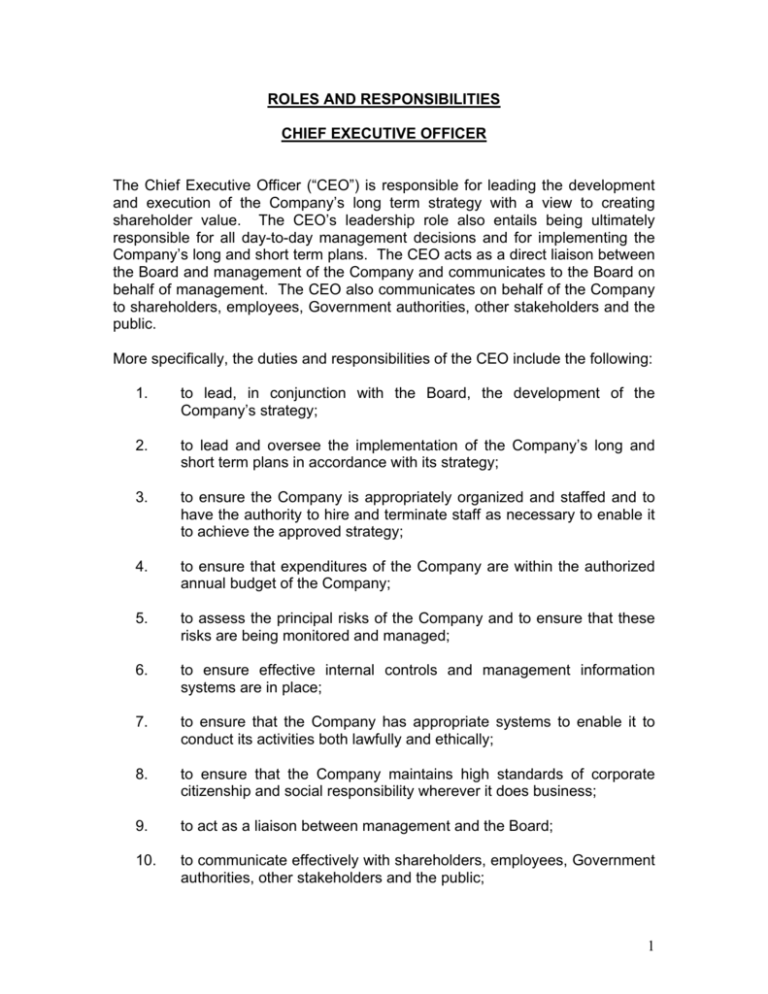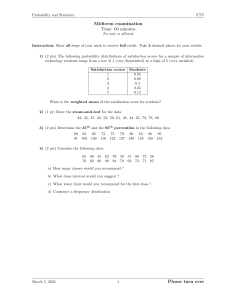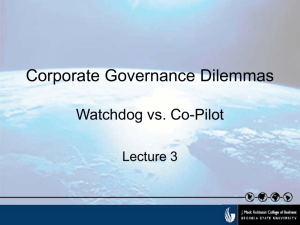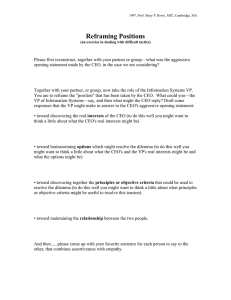1 ROLES AND RESPONSIBILITIES CHIEF EXECUTIVE OFFICER
advertisement

ROLES AND RESPONSIBILITIES CHIEF EXECUTIVE OFFICER The Chief Executive Officer (“CEO”) is responsible for leading the development and execution of the Company’s long term strategy with a view to creating shareholder value. The CEO’s leadership role also entails being ultimately responsible for all day-to-day management decisions and for implementing the Company’s long and short term plans. The CEO acts as a direct liaison between the Board and management of the Company and communicates to the Board on behalf of management. The CEO also communicates on behalf of the Company to shareholders, employees, Government authorities, other stakeholders and the public. More specifically, the duties and responsibilities of the CEO include the following: 1. to lead, in conjunction with the Board, the development of the Company’s strategy; 2. to lead and oversee the implementation of the Company’s long and short term plans in accordance with its strategy; 3. to ensure the Company is appropriately organized and staffed and to have the authority to hire and terminate staff as necessary to enable it to achieve the approved strategy; 4. to ensure that expenditures of the Company are within the authorized annual budget of the Company; 5. to assess the principal risks of the Company and to ensure that these risks are being monitored and managed; 6. to ensure effective internal controls and management information systems are in place; 7. to ensure that the Company has appropriate systems to enable it to conduct its activities both lawfully and ethically; 8. to ensure that the Company maintains high standards of corporate citizenship and social responsibility wherever it does business; 9. to act as a liaison between management and the Board; 10. to communicate effectively with shareholders, employees, Government authorities, other stakeholders and the public; 1 11. to keep abreast of all material undertakings and activities of the Company and all material external factors affecting the Company and to ensure that processes and systems are in place to ensure that the CEO and management of the Company are adequately informed; 12. to ensure that the Directors are properly informed and that sufficient information is provided to the Board to enable the Directors to form appropriate judgments; 13. to ensure the integrity of all public disclosure by the Company; 14. in concert with the Chairman, to develop Board agendas; 15. to request that special meetings of the Board be called when appropriate; 16. in concert with the Chairman, to determine the date, time and location of the annual meeting of shareholders and to develop the agenda for the meeting; 17. to sit on committees of the Board where appropriate as determined by the Board; and 18. to abide by specific internally established control systems and authorities, to lead by personal example and encourage all employees to conduct their activities in accordance with all applicable laws and the Company’s standards and policies, including its environmental, safety and health policies. 2











